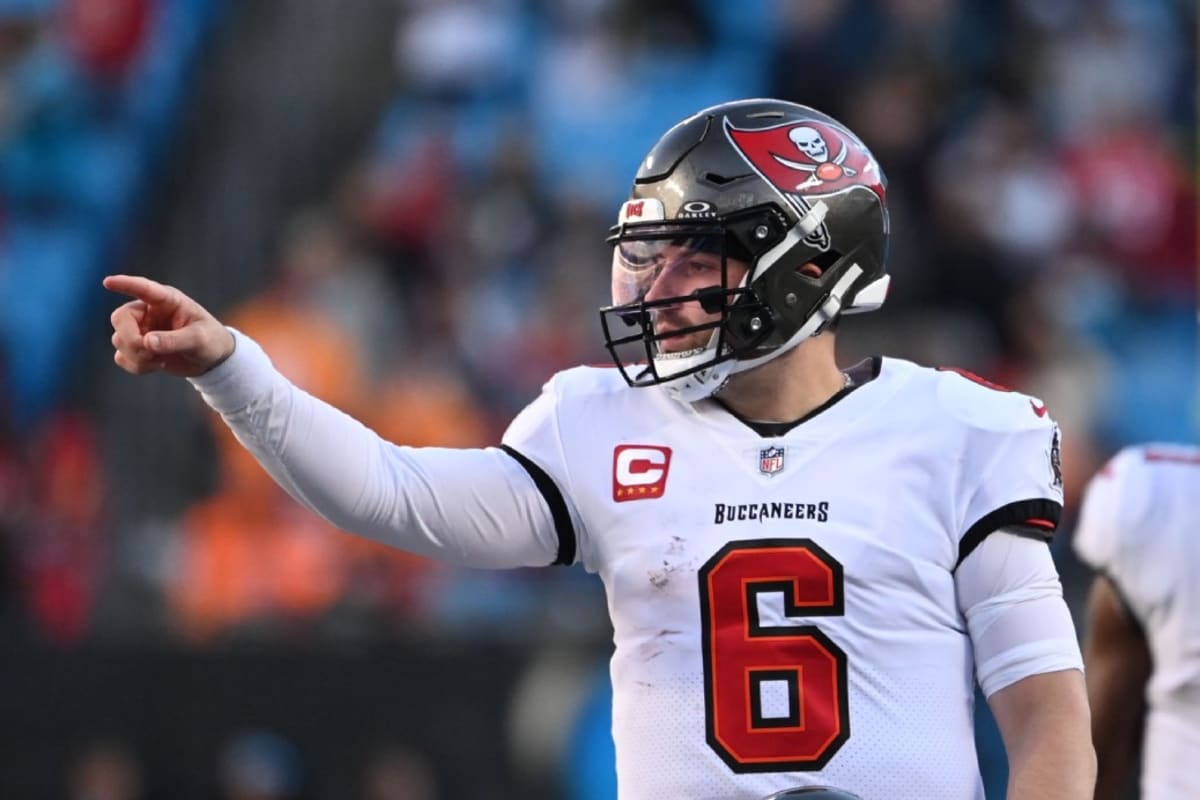The start of the new league year will soon be full of shiny new team additions, bringing some hope and excitement to fan bases similar to what the NFL draft will bring next month. But these additions will be far riskier than draft additions, simply due to their cost. Unlike cost-controlled draft picks, these players have reached the cherished status of free agency, with the leverage of multiple bidders and the riches that come with that.
Having been in the Green Bay Packers’ front office for almost a decade, it will come as no surprise that I am not a big fan of NFL free agency. Sure, there are success stories, (Charles Woodson is an example), but those are the exceptions rather than the rules. As someone who practiced the strategy of extending core players long before they hit the market, I always asked this question of free agents: Why didn’t his team try harder to sign him? What’s wrong with him? And as we have seen with pending free agents such as Chris Jones, Mike Evans and Baker Mayfield (and the franchise tag players who signed, although they had no other options), teams are loath to let players they truly value hit the market.

Bob Donnan-USA TODAY Sports
More so than any other major sport, football is a schematic game. There may be “good” players that move from one system to another and the skills do not translate. The cautionary tales are plentiful.
Despite the record level increase in the cap this offseason—a 13.4% increase to $255 million per team—my sense is that the free agent signing period will be no different than it is every year. There will be, as always, a handful of golden ticket winners, followed quickly be a second wave of more modest contracts; followed by a game of musical chairs for players to get their contracts before the good ones all run out; followed by a waiting game for older veterans trying to hook on with teams before, or even during, training camp.
The Russell Wilson debacle
The Denver Broncos were as all-in on Wilson as any NFL team was on any player, expending huge draft capital and then doubling down with a massive five-year contract extension on a deal that already had two years remaining. Now, they’re all-out, and Wilson will be elsewhere for five of those seven contract years.
Cash impact
The detritus that is left over from that contract, in both cash and cap, is as big as any we have ever seen. On the cash side, the team owes $39 million (Wilson’s 2024 guaranteed salary), an amount that will be offset by any income from another team this year. And that team appears to be the Pittsburgh Steelers.
Wilson has reported, through his Instagram account, that he will sign with Pittsburgh when released later this week. Reports indicate he will sign for the minimum, barely $1 million, leaving the Broncos with the obligation of paying the balance of the $39 million. But I don't think, as many have suggested, Wilson is signing for the minimum with the Steelers to "stick it" to the Broncos. If he was trying to do so, the play there would be to get the balance of that market value in a 2025 guarantee, but Wilson and his agent were unable to do that. The better reason that Wilson is signing for the minimum is because that's the market for him now. “Sticking it to the Broncos” sounds good in the media, but teams do not operate that way.
As anyone in business, sports or beyond, knows, these are small worlds. You deal with the same people over and over, sometimes with leverage and sometimes without. Even if the team were to blame it on Wilson and his agent, that is not how business works.
Cap impact
On the cap side, the dead money for the Broncos dwarfs any amount we have ever seen, an eye-popping $85 million in cap charges due to their exiting this contract two years into a seven-year deal. Denver will likely designate him for a post–June 1 release, thus splitting the cap effect with a $35 million charge in 2024 and a $50 million charge in ’25. Wilson will be the Broncos’ highest cap charge across two years in which he does not play for them.
I managed the cap with a risk-averse, “pay-as-you-go” approach that tried to keep as much flexibility for the future as possible. My instinct would always be to “take the medicine” as soon as possible rather than spread the cap hit over two years. Having said that, this is a completely different animal.
A few years ago, the Philadelphia Eagles broke the $30 million dead-cap barrier with the trade of Carson Wentz. Then, over the past couple of years, the Atlanta Falcons and Packers incurred over $40 million in dead cap on the trades of Matt Ryan and Aaron Rodgers, respectively. With those, the teams swallowed hard but took on the dead sap. The Wilson situation is different: $85 million is not in the same area code as $40 million, and for that reason alone, Wilson cannot be traded, as that would accelerate the entire burden into the 2024 cap.

David Dermer/AP
Even with the record level $255 million cap, that would still be 1/3rd of the entire cap going to one player—a player who is no longer there.
I still wonder what happened this time two years ago. The Broncos had just hired Nathaniel Hackett, a close friend and confidante of Rodgers, who, as we all know, had a tense relationship with the Packers at the time. It seemed like that union could happen. Then, somehow, the Packers signed a big contract extension with Rodgers (that lasted one year) and the Broncos pivoted to Wilson. One day perhaps we’ll know what caused the change that the Broncos must now regret.
Wilson, when leading the Seattle Seahawks to Super Bowls while still on a rookie contract, was once the most underpaid player in the NFL. He now, as a player being paid almost $40 million to play for someone else, becomes the most overpaid player in the NFL. The circle of life in the business of football.
Before the additions … come the deletions
Any thought that teams’ newly found cap room would lead to fewer veteran players being released prior to the league year has already been proven wrong.
Teams are shedding non-guaranteed contracts easily, as teams can just “get out” from contracts that are, on paper, worth tens of millions of dollars. In leagues like MLB and the NBA, teams can also release veteran players with existing contracts—the difference there is that those players still get paid.
In one day alone, the Buffalo Bills released veterans like Tre’Davious White, Nyheim Hines, Deonte Harty, Mitch Morse and Jordan Poyer. Buffalo also wrangled a $10 million pay cut for Von Miller, shedding almost $42 million from its payroll. Further, the collective amount of salaries now off of team payrolls just from released safeties alone—players such as Jamal Adams, Quandre Diggs, Justin Simmons, Rayshawn Jenkins and Kevin Byard—is equivalent to over $100 million.
Too often people focus on cap, but the important thing to teams is cash. Cap is just accounting; cash is, well, money. Yes, there will be some big free agent signings, but teams are shedding tens of millions of real dollars over the past couple weeks with only accounting (cap) consequences, not real (cash) ones.
These releases should remind us, as they do every year, that future non-guaranteed contract years have little value and are fungible. Indeed, many in the free agent class of 2024 will be in the “veterans released” classes of ’26 and ’27.
Know this when you read about the big contracts being signed this week: They are not what they appear to be. Reports are almost always coming from the agents, who have vested interests in having the numbers painted as rosy as possible. But they are not the real deals, or the guaranteed amounts that have no contingencies. For example, let’s look at the reported amounts for the Tampa Bay Buccaneers’ re-signings of Mayfield (three years, $100 million) and Evans (two years, $52 million). The real amounts are: Mayfield, for one year, $40 million, and Evans, for one year, $29 million. The rest? Well, that is up to the Bucs. These are certainly not “bad” deals, but they are not what they appear to be either.







